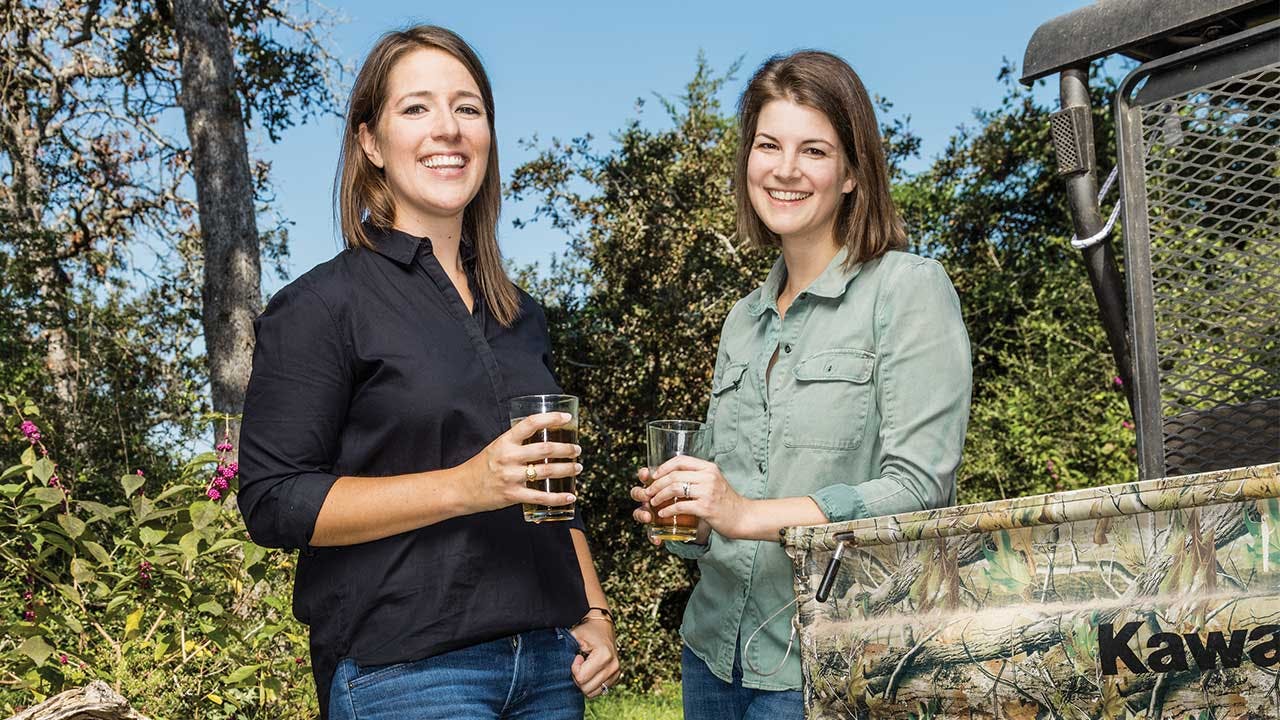During the drought of 2011, sisters Abianne Falla and JennaDee Detro watched as one-hundred-year-old oak trees died on their family’s ranch, in Cat Spring. On neighboring ranches, entire herds of cattle were sold because there wasn’t any grass or hay to feed them. As the landscape grew increasingly desolate, only one thing remained green: the thickets of yaupon growing wild around the property. Curious whether the hardy shrub had any practical value, Detro (who lives in Katy) did some research and learned that yaupon—which is the only known caffeinated plant native to North America—was consumed as a tea by Native Americans a thousand years ago. She began experimenting in her kitchen, creating yaupon tea blends and sending them to Falla (who lived in Washington, D.C., at the time and has since moved to Austin) to taste-test. Detro had hopes of selling the blends at farmers’ markets, but Falla, who holds an MBA, saw bigger potential. Since launching their business, in 2013, the sisters have produced more than 100,000 cups’ worth of yaupon tea, which is available online and is also served, hot or iced, at several high-profile Austin restaurants, like Odd Duck and Dai Due. “What has been so neat is this sense of discovery. Yaupon is a totally overlooked and undervalued resource,” Falla says. “Our great-grandparents were farmers, and for us to be able to uncover yaupon’s legacy while carrying on the legacy of generations before us has been exciting.”

Q&A with Abianne Falla and JennaDee Detro
How does the process of making a batch of tea begin?
AF: Our crews harvest wild yaupon from our land and our neighbors’ land in Cat Spring. In our part of Texas, yaupon is very prolific and makes up most of the undergrowth of any land left wild. Then, once it’s harvested, we either dry it or roast it. The dry yaupon is the green yaupon tea, and the roasted is our black yaupon tea. The dried has the more grassy, earthy note, and the roasted has that caramelized tea flavor we are more familiar with in the black teas we drink.
What was the most challenging part of learning to make yaupon tea?
AF: It was definitely a series of iterations. We started making it in our own personal ovens, then we rented a commercial kitchen space. We are now heat-treating and crushing leaves, finishing our yaupon tea blends, and packaging the final product in our custom facility, in Katy. There really isn’t commercial-scale tea production in the U.S. You can go online and see equipment available in India and China, but that’s not feasible for us. So we’ve been working to see what equipment from other agricultural industries in the U.S. we can leverage to use in our production.
Have any experts in the field advised you along the way?
AF: Stephen Talcott, at Texas A&M, where we both went to college, has been incredibly helpful. He is a professor of food chemistry and has done some great studies on yaupon. And a lot of folks in the tea industry have welcomed yaupon. We’ve had plenty of friendly, casual conversations with true tea—Camellia sinensis—experts who are intrigued with yaupon’s “new” and different taste.
Part of your mission is to give jobs to people who are looking for a second chance. Can you tell me about this philosophy?
JD: The identity of the whole company is this idea of a second chance or rediscovery. We want to work with people who don’t have a work history or who have a criminal history and are having a hard time finding a job because of that. We love working with people who are honest and trustworthy and whose futures are going to look different from their pasts. We are willing to take that risk with people. We don’t have hundreds of opportunities now, but we want to build so we can make a difference by selling tea.
For more information, go to catspringtea.com.
- More About:
- Business







